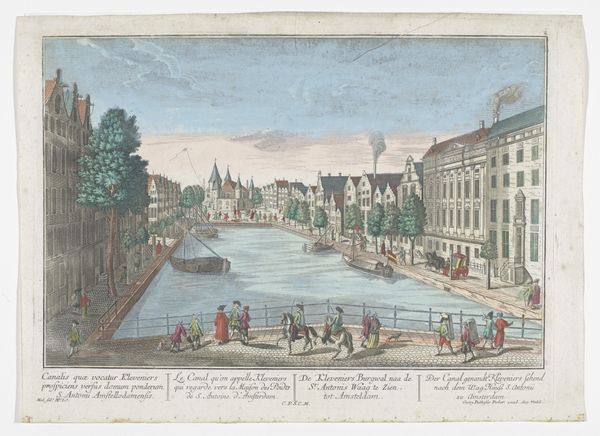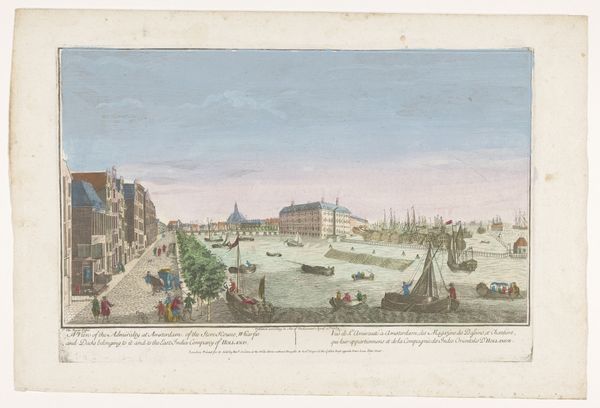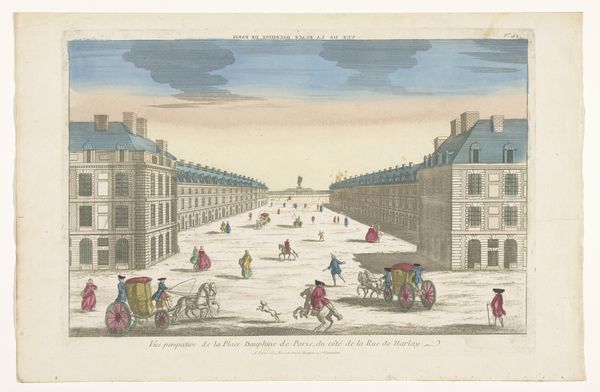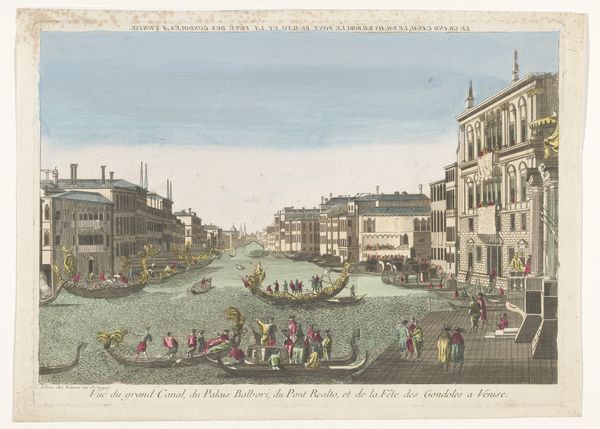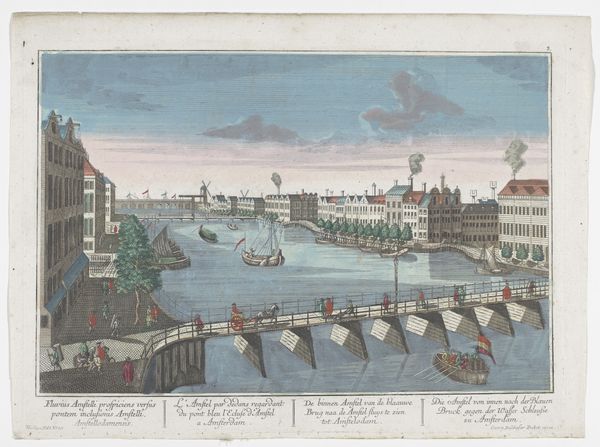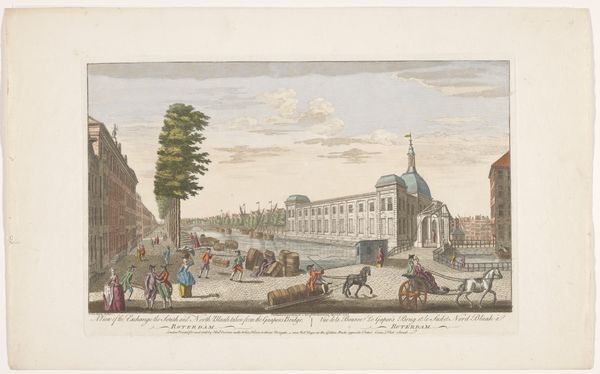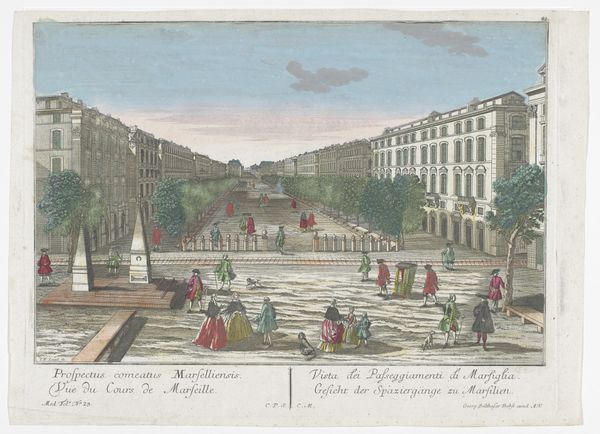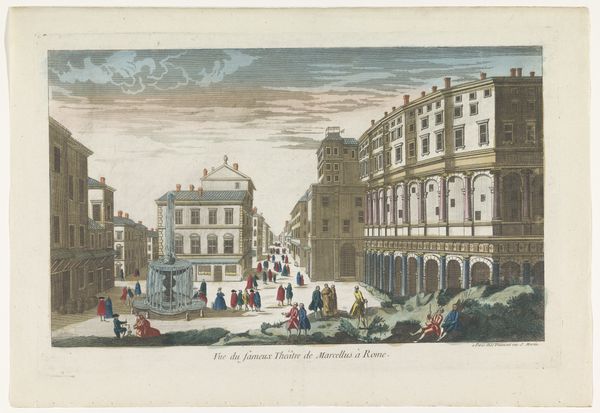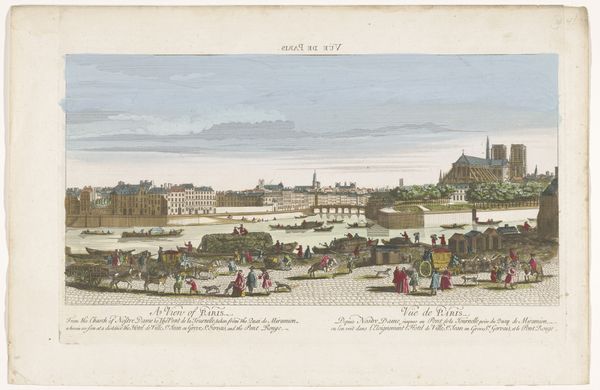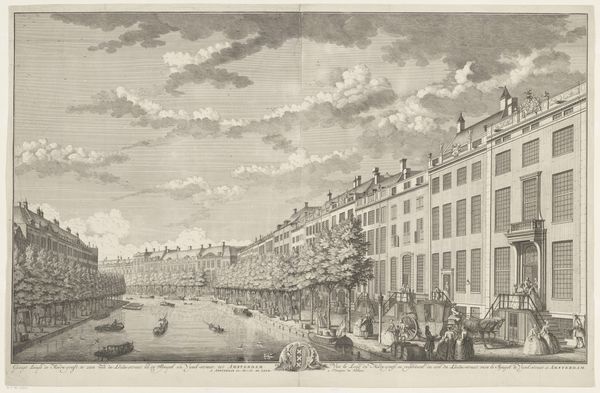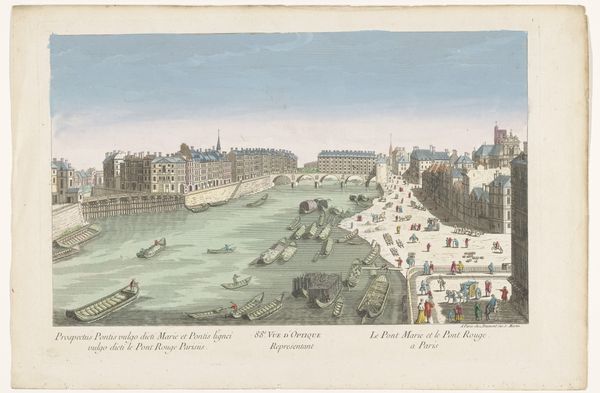
Dimensions: height 302 mm, width 422 mm
Copyright: Rijks Museum: Open Domain
Curator: Before us hangs "View of the Herengracht in Amsterdam," attributed to Georg Balthasar Probst and created sometime between 1742 and 1801. It is presently held in the Rijksmuseum collection. Editor: It feels…orderly. A very precise kind of picturesque. The composition directs your eye smoothly down the canal, but it’s also quite flat, wouldn’t you say? A two-dimensional interpretation of three-dimensional space. Curator: Indeed, there's a fascinating tension between perspective and pattern. Observe the near-perfect symmetry: rows of houses mirrored on either side of the canal, their facades acting as repeating geometric units. Note how Probst utilizes line to create depth but also flattens the scene, a Baroque interest expressed with geometric precision. Editor: And look at the people bustling along the canal. There is almost a symbolic quality to these figures. Do you think it is more pageantry or practical transport being represented by all of the vessels with flags along the river? The very orderly rows of houses are juxtaposed by chaotic people and conveyances in front. It speaks of pride, prosperity and controlled civic expression of the era. Curator: Exactly. Waterways and canals in the Low Countries bear cultural weight and signal social structures, navigation and the crucial interlinking of trade routes during the Baroque era. Further observe how the delicate watercolors contribute to a serene, almost idealized atmosphere, further softening and elevating what is perhaps at once the mundane and awe-inspiring characteristics of Dutch civic life. Editor: A frozen moment then, not truly capturing daily bustle. This isn't just a depiction; it’s a constructed vision, where the inherent symbolism reinforces ideas of civic harmony and prosperity. It offers, perhaps, more aspiration than documentation. Curator: Agreed. Probst manipulates spatial organization to amplify specific philosophical intentions about order and industrious life. Editor: Thinking about it, what really holds my attention is the careful balancing of detail and generalization. Curator: Absolutely. A detailed examination of the building facades, then juxtaposed with that ethereal sky and watery rendering of space. Editor: Ultimately, the print offers us both an aesthetic construction of space, and rich set of societal signals.
Comments
No comments
Be the first to comment and join the conversation on the ultimate creative platform.
